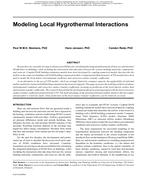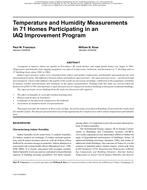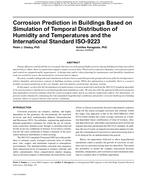-
-
Available Formats
- Options
- Availability
- Priced From ( in USD )
-
Available Formats
-
- Immediate download
-
$16.00Members pay $12.00
- Add to Cart
Customers Who Bought This Also Bought
-

Buildings XI Conference -- Modeling Local Hygrothermal In...
Priced From $16.00 -

Buildings XI Conference -- A Sound Indoor Climate for a M...
Priced From $16.00 -

Buildings XI Conference -- Temperature and Humidity Measu...
Priced From $16.00 -

Buildings XI Conference -- Corrosion Prediction in Buildi...
Priced From $16.00
About This Item
Full Description
Sustainable or "green" buildings are becoming increasingly popular. This is a positive trend, since buildings require the use of vast amounts of resources and energy. They are, among other things, responsible for approximately 39% of CO2 emissions and 65% of waste outputs. Obviously, sustainable buildings require that their enclosure also be conceived and realized according to ecological principles. However, it appears that these green building enclosures are not always durable. Indeed, there are reports in North America of many green buildings having suffered major building enclosure failures after only a few years. This results in environmental, economical, and social impacts that can reduce or negate the positive impacts of those green buildings. The questions then become: What are the potential traps in green building design that can lead to such failures? And what can be done to avoid them? These questions are examined through examples of building enclosure failures in green buildings. These help identify potential pitfalls, which include
- Disregarding building science principles when designing a green building
- Designing green buildings with a configuration that is not adapted to their actual exposure conditions and context
- Using materials in the wrong places and/or for the wrong purposes because they meet certain ecological criteria





